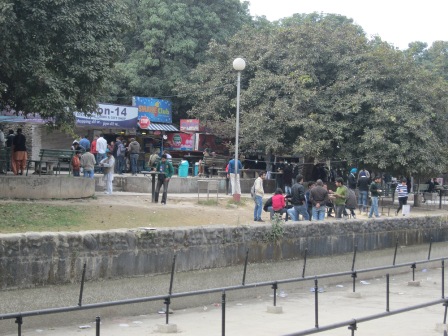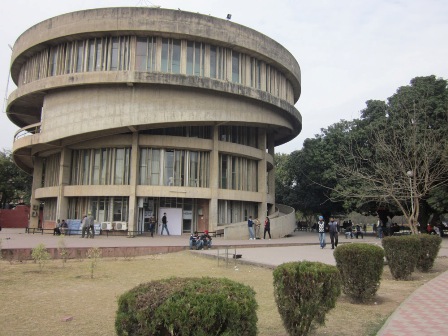Chandigarh: It may not be a pilgrimage spot but not one student on the Panjab University (PU) campus here would say that he or she has not been there. The Students’ Centre a.k.a. ‘Stu-C’ at the university campus has been a ‘must-do’ for students and visitors coming here.
The centre was built with the idea of providing to students a place of recreation. The three-storeyed round building still stands tall even though a range of small shops have been allowed to be opened in the area in the past few years.
The Stu-C building itself houses an old Coffee House, recreation room, offices of the Students’ Council and the Dean-Students Welfare and a couple of eateries. The adjoining shops serve all kinds of street food and drinks – from lemonade, coffee and shakes to Chana Bhatura, Chana Rice, Rajmah Chawal, Noodles, sandwiches, burgers and much more.
“Even when we were no longer students, we used to visit the centre with friends. It has been a famous place for all generations,” said Amandeep Singh, ex-president of the Students’ Council.
“I still remember the first time I ever came to Stu-C. The image is still bright and I remember the exact location where I sat for a cup of tea with my friends and discussed our research work,” R.K. Kohli, an alumnus and at present Professor in the Department of Botany said.
He added: “Earlier, it was just the Indian Coffee House. Rest of the area around it was deserted. It was peaceful and calm. Now, with the new shops surrounding the building, the place is crowded all the time. The violent acts of some students are also an addition.”
Retired army officer Capt. Rajneesh Talwar, who owns a gift shop at Stu-C, has seen the place change over 30 years.
“I recall that when it was just the coffee house, we had to wait for at least 30 minutes in the queue for finding a place to sit in its cafeteria,” Talwar said.
“Earlier, students who came to the centre would discuss their courses, music department students would practise music, theatre department students would gather here to practise their plays. Now, since children right after completing school are joining the university, the intellect and maturity are diminishing,” he pointed out with an expression of disappointment.

The taste of south Indian food is just the same as it was years ago.
“The different and unique taste that the Stu-C coffee house has established cannot be matched by any other place,” said Naval Kishore, alumnus and faculty member of the university.
For the younger generation teachers though, Stu-C has hardly changed.
“The moment you enter the Indian Coffee House, it feels like you have travelled back in time. Just the ambience of the place has changed, otherwise it is all the same. The laid-back kind of attitude of students is Stu-C’s definition. The only additions are in the number of shops and the variety in menu,” pointed out Mohanmeet Khosla, alumnus and now faculty member of the School of Communication Studies.
The opinions, beliefs and viewpoints expressed by authors, news service providers on this page do not necessarily reflect the opinions, beliefs and viewpoints of Hill Post. Any views or opinions are not intended to malign any religion, ethnic group, club, organization, company, or individual.
Hill Post makes no representations as to the accuracy or completeness of any information on this site page.



